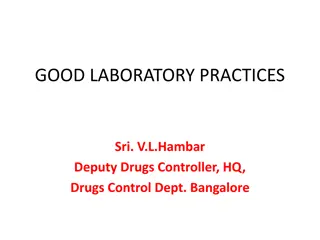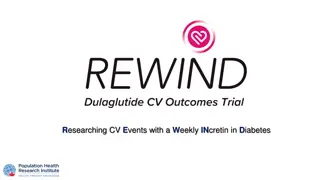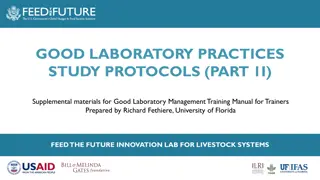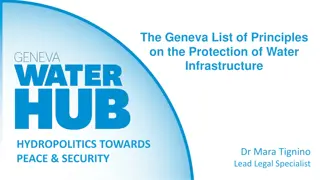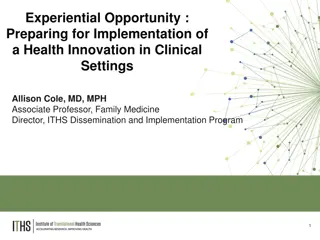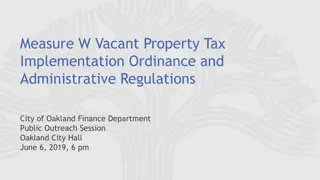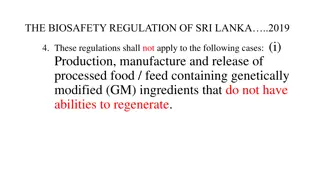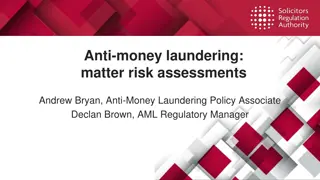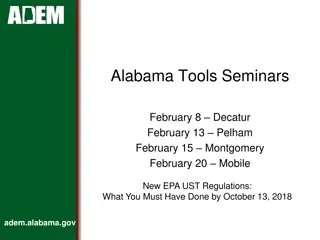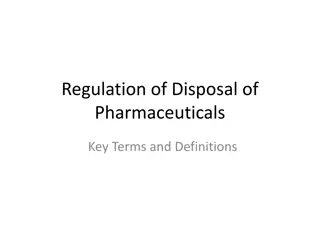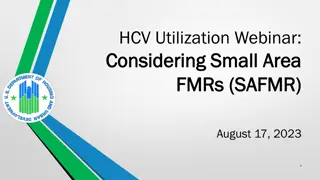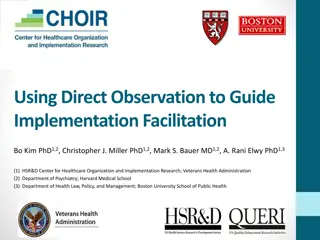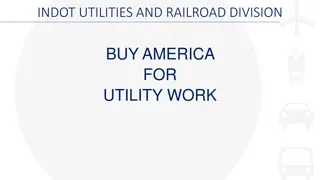Understanding GLP Regulations and Implementation
GLP regulations were established in response to poor practices in toxicology laboratories, with a focus on ensuring quality in non-clinical health and environmental studies. The birth of GLP in the 1970s led to the development of international standards, outlined by the OECD Principles. GLP aims to improve data accuracy, promote mutual recognition of study data, and enhance study integrity. Key considerations in GLP implementation include organization, personnel, facilities, resources, protocols, documentation, and quality assurance. Adequate resources and proper characterization of test items are essential for GLP compliance.
Download Presentation

Please find below an Image/Link to download the presentation.
The content on the website is provided AS IS for your information and personal use only. It may not be sold, licensed, or shared on other websites without obtaining consent from the author. Download presentation by click this link. If you encounter any issues during the download, it is possible that the publisher has removed the file from their server.
E N D
Presentation Transcript
OVERVIEW OF GLP REGULATIONS Mercy Okezue
The Birth Of GLP -In the early 1970s, the FDA investigated a number of cases of poor practice in toxicology laboratories throughout the USA - Results of this investigation in about 40 laboratories revealed many cases of poorly managed studies, insufficient training of personnel, and some cases of deliberate fraud - Many countries introduced their own GLP Regulations - The OECD produced GLP Principles in 1981. These regulations have now become the international standard in the domain - In 1976, the FDA published a draft regulation on GLP - After the consultation period, the final regulation was published in 1978 - This came into force in 1979
WHAT IS GLP? Defined in the OECD Principles as: ...a quality system concerned with the organizational process and the conditions under which non-clinical health and environmental safety studies are planned, performed, monitored, recorded, archived and reported.
GLP Aims 1 To make incidence of False Negatives more obvious 3 To promote mutual recognition of study data across international frontiers 2 To make incidence of False Positives more obvious (False negative : Results demonstrate non-toxicity of a toxic substance) (False positive : Results demonstrate toxicity of a non-toxic substance)
MAIN / FUNDAMENTAL POINTS IN GLP CONSIDERATIONS Organization, personnel, facilities - building and equipment Resources Protocols / Study plan, SOPs concept of the Study Director as the pivotal point of study control Rules Characterization Test items & test systems Documentation Raw data, final report, archives. Independence from study conduct Quality assurance
RESOURCES Buildings: Adequate Separations Physical separations: Rooms Cabinets / Isolators Air systems and filters Separation by work areas Defined work areas One-way systems Different activities in same areas at different times Cleaning between activities Separate staff GLP WHO Training manual
CHARACTERIZATION Test Item GMP is not required for manufacture of GLP batches Regulatory Authorities require testing to ensure test items suitability for preclinical studies Use single lot throughout study if possible Protect test item from cross contamination/pollution Ensure traceable records for test items What are Test Systems ? Animals Bacterial Cells Organs Plants can also be Analytical equipment
Rules The protocol (or study plan) which describes how the study is designed and how it is to be conducted, including the expected timeframe of the study Approval of the Protocol (study director) Distribution of the Protocol Protocol Amendments The standard operating procedures (SOP) which provide detailed instructions about how to actually perform each technical procedure, and how to ensure sound organization of the study, its environment and data
Documentation: Results Records and recording - The raw data should include: WHAT was done HOW it was done WHEN the work was performed WHO performed the work Study data Personnel data Systems data Quality assurance files FINAL REPORT (study director) Accurate Reporting and Deviations Statement of compliance to GLP standards and validity of data What is Archived?
Quality Assurance In summary, the fundamental mission of QA is that of an independent witness to the whole preclinical research process and its organizational framework To respect GLP Principles, QA must review all phases of preclinical research - from planning to reporting and archiving of the documentation To be effective, QA must have access to staff documents and procedures at all levels of the organization, and be supported by a motivated top management the signed QA statement becomes a release document (not a GLP compliance statement)
Further Reading https://www.who.int/tdr/publications/documents/glp- handbook.pdf proto.ufsc.br/files/2012/03/glp_trainee_green.pdf


